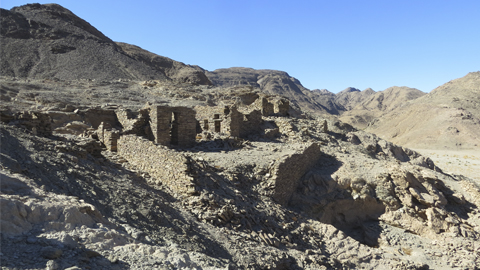End of the third Sikait Project dig campaign in Egypt

25/02/2020
The Sikait Project is conducted in collaboration with the Polish Centre of Mediterranean Archaeology and under the authorisation and supervision of the Egyptian Ministry of State of Antiquities. It focuses on studying the region of the Wadi El Gamal National Park, in the Eastern Desert, an area known in ancient Egypt as "Mons Smaragdus". The campaign was conducted at the main site of this region in Sikait.
This year the digs focused on the large residential complex known as the “Tripartite Building”, which stands out for being formed out of several surprisingly well-conserved buildings. They also continued works on the “Large Temple”, the main cult building on the site, with excavations in one of the lateral chapels and the discovery of a new small votive altar on the upper part of the temple. Finally, the last part of the campaign focused on documenting the structures of Sikait mines in such a way that an archaeologist specialising in speleology was able to enter the wells and galleries and for the first time document the emerald mines dating back to the Roman period. From a heritage point of view, the arcaheologists also began a comprehensive process of consolidating one of the site's main buildings. In the upcoming months they will publish the specific results of this campaign.
The team was formed by four archaeologists, two restorers, one ceramologist, one archaeologist-speleologist and an intern student. Also at the site were two inspectors and a restorer from the Egyptian Ministry of State of Antiquities. Funding was provided by the PALARQ Foundation and the Ministry for Culture.